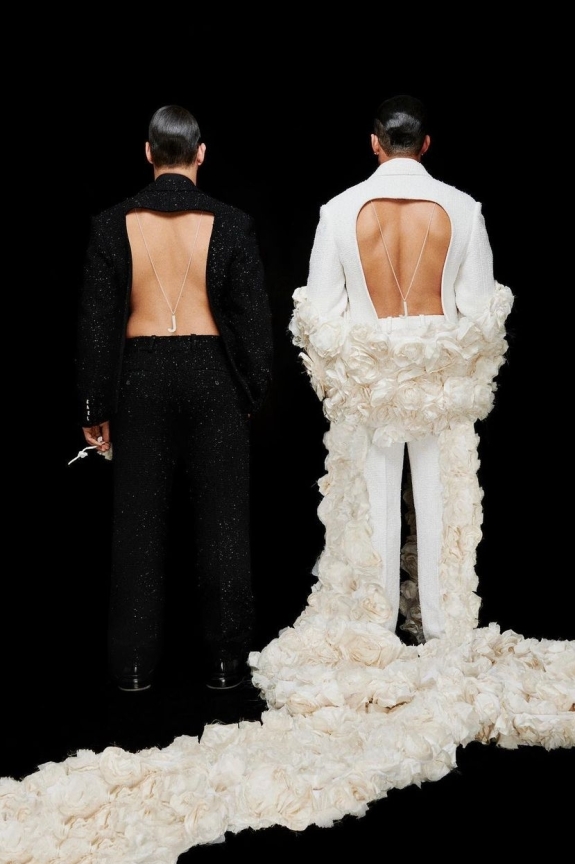Emily Yates, Jason Lloyd Evans
Marriage is a time of celebration, a ceremony recognizing the official union of the betrothed that is centuries old and steeped in ritual. We gather together, giving weight and honor to those in attendance, choosing how and with whom we share the magnitude of the moment that recognizes now and forever, a love like no other. And yet, until recently, the beauty and intimacy of marriage has been denied to the LGBTQIA+ community. It is a rite that has been bound and shaped throughout history, once confined to the narrow dictates of a binary relationship; now, regardless of gender, the union of any two people has finally been legalized and embraced in many countries around the world.
However, despite recent changes, the wedding industry still often clings to outdated stereotypes, traditions and language that can alienate the LGBTQIA+ community. In an effort to foster inclusivity within the wedding industry and guide our LGBTQIA+ community to creating an experience authentic to their unique love, Australian marriage celebrants Aniella Batten and Laura Campbell of The Romantic Celebrant offer their invaluable tips and advice.
Walking Down the Aisle
Traditionally, the bride is walked down the aisle by her father to be given away to her husband-to-be. While many still choose to keep this tradition, it is important to recognize that either party can have their own aisle moment. Both partners, regardless of gender, can have their special entrance or even walk down the aisle together. If you aren’t one for the spotlight, skip walking down the aisle entirely and instead take your place at the altar prior to welcoming your guests into the ceremony space. Another idea is for each person to enter from opposite sides of the aisle, and to walk towards each other. This symbolises two people entering as equal individuals and walking out together as a married couple.
Ceremony Positioning
Traditionally, the bride is placed on the left, with the groom on the right. However, it truly doesn't matter which side you stand on. Instead, you can choose based on which side of your face you prefer in photos, or if your outfit or hairstyle has accents you want to show during the ceremony. If you’re comfortable in the ceremony space, that’s the most important thing.
Maple and June, Tones and Harmony
Wedding Parties
More couples are embracing mixed-gender wedding parties. Long gone are the days of men on one side and women on the other. Why leave out your best friend, just because of their gender identity? The term "bridal party" isn't inclusive, as even in a heterosexual couple, the day is equally important for both partners. This also extends to your wedding party's outfits and the traditional idea that women wear dresses and men wear suits. Your wedding party should be encouraged to wear something more inline with their identity, while keeping with your intended scheme.
Flower Children
Rather than having “flower girls and page boys”, embrace flower children. Opting for gender inclusive language will allow the little people in your life to have any role in your wedding ceremony that they feel confident and excited to fulfill.
The Pronunciation at the Conclusion of the Ceremony
"I now pronounce you husband and wife," and "you may kiss the bride" are traditional phrases. However, it's important to inform your celebrant how you identify and your wishes for the ceremony phrasing so they can address you appropriately. Some inclusive language options could be: “It is my greatest pleasure to announce that you are officially married” or “I am absolutely delighted to now pronounce you married.” Also, if one party is taking the other's surname, the couple can be introduced by their shared surname.
Make Your Own Traditions
Every couple has a different story, something that makes them unique. It’s the celebrant's role to create a space and ceremony that authentically reflects each couple both as individuals and as a partnership. If a tradition doesn’t sit right with you, ditch it, and create new ones that mean something, and will bring value to you and your guests.































